Contributor: Jacob Adler
Work and Life is a radio program hosted by Stew Friedman, director of the Wharton Work/Life Integration Project, on Sirius XM’s Channel 111, Business Radio Powered by Wharton. Every Tuesday at 7 pm EST, Stew speaks with everyday people and the world’s leading experts about creating harmony among work, home, community, and the private self (mind, body, and spirit).
On Work and Life, Stew Friedman spoke with Amanda Engstrom Eversole, Senior Vice President and Chief of Staff of the US Chamber of Commerce and acting president of the Center for Advanced Technology and Innovation. She was recently named one of Wharton’s 40 under 40. They discussed how she manages her high powered career while hewing to her core values – how she aligns her actions with her values.
Stew Friedman: You’ve just been promoted to the President of the Chamber’s Center for Advanced Technology and Innovation. How did you end up in that role? Tell us the brief highlights of how you got to this role right now.
Amanda Engstrom Eversole:
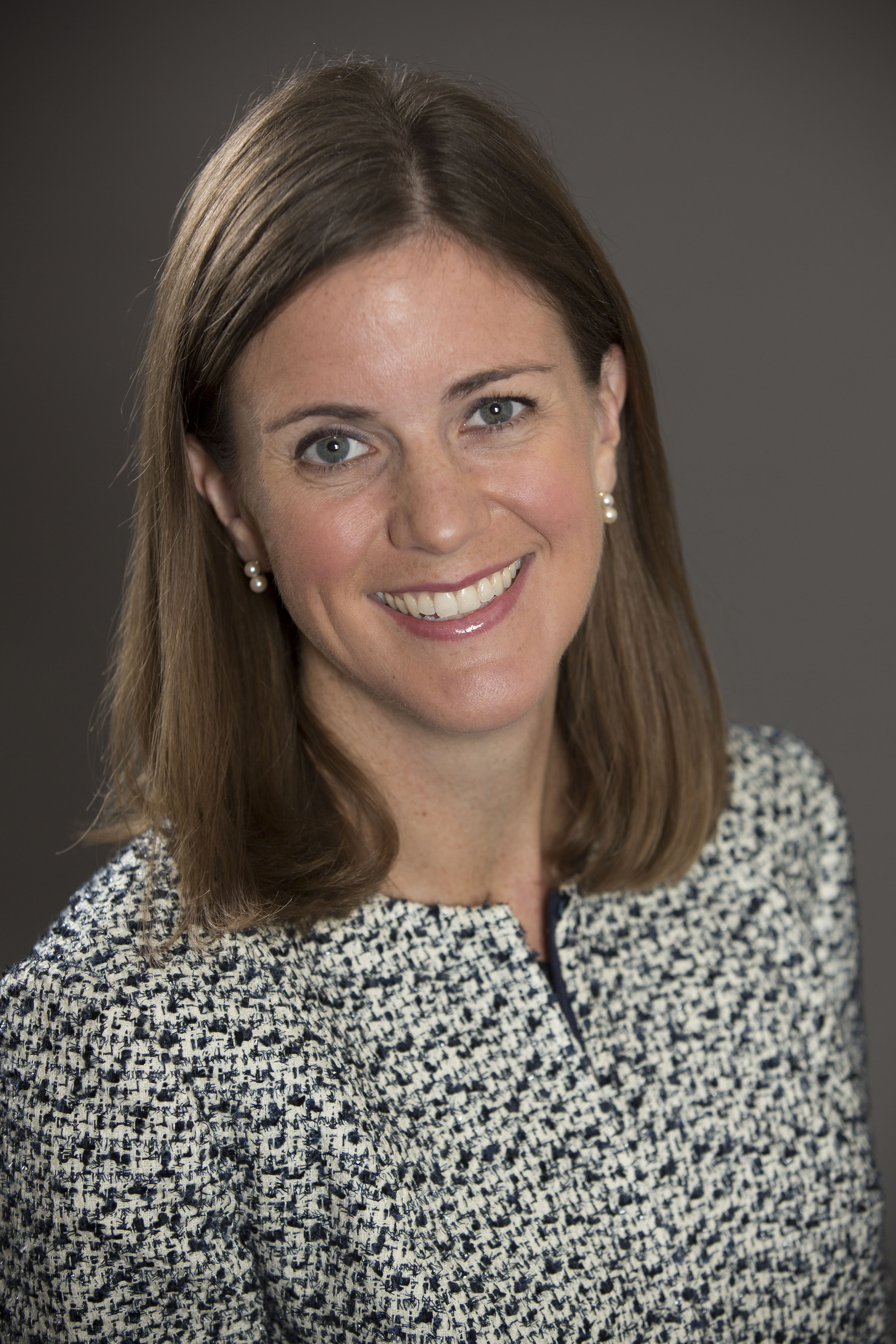
Washington, DC, USA – October 23, 2014: Amanda Eversole. Photo by Ian Wagreich / © U.S. Chamber of Commerce
My background is actually in communications, and I started off about 15 years ago as a business development person within an advertising agency in Washington, D.C, completely unconnected to politics in any way. I thought I really wasn’t going to fit in in Washington but I wanted to figure out what the public policy world was all about. I went over to the U.S. Chamber of Commerce and what we are is we represent businesses broadly from small companies to large companies before the government, before the court, and before what we like to call the court of public opinion. I came over in a relatively junior level position and worked in a communications capacity and since then I’ve had about 22 different jobs in that time. I’m sort of what you’d call the utility player. When we’ve had a project that’s hard and they needed somebody to jump in, roll up their sleeves, and figure it out, I’ve been that person on a number of different projects and so this Center for Advanced Technology and Innovation is the latest example of that. It’s really a startup organization within the Chamber of Commerce. I’ve had that for just a few months now.
SF: What’s the mission of the Center for Advanced Technology and Innovation?
AE: We’re actually figuring that out as we speak and I would be really interested if some of the listeners, if they’d like to reach out to me offline or through social media, that would be terrific. What we’re really trying to do is give technology companies of all sizes a voice in the public policy development. What we’ve found is that particularly in the startup world, you have companies so focused on getting their companies off the ground that they don’t see possible regulation or legislation that could have a massive impact on their business model. We’re trying to connect that process much earlier in the cycle. Likewise, on the flip side, with larger institutions, we’re trying to make sure that their voice is represented as part of the broader business community.
SF: So you’re wanting the public to speak to you in and add their ideas about what exactly?
AE: Well, we’re defining our mission. Innovation in the economy is what’s going to be driving the job creation, which is really the heart of what the Chamber of Commerce is focused on.
SF: You didn’t graduate and say I’m going to be the the head of technology for the U.S. Chamber of Commerce, did you? Or was that the plan?
AE: Absolutely not.
SF: So how did you get there? What was the path that led you this type of work and what you believe is important about your life and your purpose in your work?
AE: It’s really one where doors had been opened for me along the way. The headline is really about having the courage to step through those doors. Candidly, at the time, I didn’t always know what I was doing. I’ve often come across people who have been very clear in what their life mission, from a work perspective, has been. They wanted to be a doctor, they wanted to be a lawyer, they knew what their calling was. I, on the other hand, didn’t.
SF: I think that’s like most people. So you didn’t know, so what did you do?
AE: When opportunities came up, by default, I would say yes. My career at the Chamber, I’ve been there for over 12 years now, which if you had asked me at the beginning if I thought I was going to stay in any place for more than five years, I would have said very unlikely. But the beauty of this organization for me is that I’ve been given the opportunity to go and create several new programs from the ground up and learn how to add value to our membership. It’s a unique business proposition because we represent businesses broadly so I have a chance to think about things from a different perspective, meaning how would businesses of all sizes or industries be affected by a particular public policy or by a particular piece of legislation. Once you understand how to do that, applying it to the different policy areas is all about learning the substances, because you already have the tools in the toolkit at that point. So I was involved in our Capital Markets Group in the lead-up to and following the financial crisis. It was a very important time, clearly, not only from an economic perspective but also from making sure that any policies, or ultimately the Dodd-Frank Act that was passed, prevent future crises but don’t ultimately impact the ability to raise capital for businesses of all sizes. So, different subject matters, but interesting how you can apply it in business contexts of all fashions.
SF: So the core mission, then, how would you describe what the core mission of the Chamber is and in terms of how it relates to what you believe is important about business and society?
AE: At the end of the day, we’re advocates for our members and businesses of all sizes, and we find it to be our role to speak up and say things that perhaps businesses can’t say on their own or would prefer that a trade association like the Chamber might say. Formerly one of my positions was as Chief of Staff and I was able to leverage our resources broadly, not only from a public policy perspective but I also led our charitable giving program. One of the things that was important being a student of yours in the Total Leadership Program was making sure that all four of my domains were aligned with what my own personal interests were. So I was able to figure out how to tie together both a work objective and being a good corporate citizen, and also my own personal belief of how to give back to the community and society. That was really sharpened and honed through this program, and we’ve been able to do some really wonderful things, both for our staff and for the community as a result of that.
SF: So tell us, what are you most proud of in terms of what you’ve achieved in that capacity?
AE: Well, there have been a couple things. The first is there was a domestic violence shelter in D.C. called WEAVE, Women Empowered Against Violence. One of the things I like to sharpen when we’re deciding where to invest our time and our resources is where our dollars and where our time is going to make the biggest impact. This organization’s mission is to help women and men who are victims of domestic violence find not only access to legal resources but access to resources to get them out of situations that are difficult. We were able to provide our resources and we were able to gain access to people who volunteered their time to help from a financial standpoint. The organization was about to go under, and we were able to extend the life of the organization for well over a year. Unfortunately, it ended up closing down and reforming in a different capacity, but that one year’s time was so important. We helped many survivors of domestic violence to have a second chance. If we hadn’t there, there would be dozens of people who would have been in very difficult circumstances. I’m really proud of that work, and there are a lot of different cases like that.
SF: So this is an interesting example taking advantage of an opportunity at work that enabled you to have a real positive social impact on an organization that you wanted to support and to also help your organization in some important way. I’m assuming it also it also helped your career, I’m inferring. Is that accurate?
AE: Absolutely.
SF: That is a great example of integrating the different parts of your life in a way that works for all of them, to look for and take opportunities that enable you to express what you believe is important and especially when it’s going to be helpful to your business life. You just had your first child. How has that changed things for you and the role that you play in the Chamber and how you’re thinking of your career?
AE: Everybody told me before I had the baby that it’s going to change my life completely, but until she was born and until I had held her for the first time, I really truly couldn’t understand what that meant. It’s just a richness and we are so blessed to have her. I’ve only been back at work for one month now. Interestingly I was promoted into this technology capacity two months before I had the baby so there’s been this break between work life and family life and now I’m trying to manage both together and its caused me to think through and make some difficult choices. As I alluded to earlier, one of those choices was I stepped out of the Chief of Staff capacity, where I had a relatively interesting job design with three very significant management roles. One with the technology program, one in an operational capacity as Chief of Staff, and one in our Center for Capital Markets Competitiveness. And the beauty of having three months away from the office, where I was actually fairly disciplined at staying away from email and really focusing on the present and my child, my family, was when I came back my perspective was quite different.
SF: How has it changed?
AE: I thought about things like how can I set myself up to be successful rather than just taking on more and taking on more. I made a very conscious effort to see how I could do things differently and end up performing at a very high level. This entrepreneurial effort as it relates to technology was where the growth was, whereas the operational role, albeit extremely important, was something that I had done for a while and it was likely time to pass that opportunity on to someone else. But it was quite hard for me, to be candid with you, to say I can’t do everything anymore.
SF: You said earlier in our conversation that one of the keys to your successful growth in the early stages of your career was to step through the open doors. This is kind of contrary to that, isn’t it?
AE: Absolutely. There are days when I wonder if I made the right decision. When I take a step back and take a deep breath I’m very certain that the answer that is yes. It’s an inflection point and I’m sure that many people, particularly working mothers, question themselves: are you letting your career go by? are you making decisions that put you on a different trajectory? In this case, I felt like I needed to make sure that I was going to set myself up to be successful. And it was fairly evident to me that trying to do, in essence, three full-time jobs in addition to my new daughter is impossible. The idea of doing all those things so-so wasn’t appealing. So I made a decision, and it will be an interesting experiment.
SF: What do you expect and what do you hope for? What do you think is going to happen? This is new for you, to say “no” to opportunities as opposed to saying “yes” to open doors.
AE: I expect that I’m going to have days where I’m going to be motivated to jump back into my old capacity. I’m going to have to be very disciplined about not doing that. Being Chief of Staff is one of those roles where people have been very conditioned to come to me for certain questions or certain advice. Helping people find somebody else to serve them in that counseling role is very important. On the other hand, it’s very easy to get dragged back in if somebody knocks on the door and just needs a few minutes. Then the next person needs 15 minutes and all of the sudden, your day has been eaten up.
SF: Right, but that’s been, as we have been saying, the key to your success, to be available, to jump in there, and be the Jane of all trades. And to get it done no matter what. Inflection point is an interesting way to put it. Saying “yes” is something you were really good at and got a lot of rewards for. What do you think is going to be helpful to you to have the courage to be able to draw those boundary lines?
AE: Well, I think a lot of it is how this new program is ultimately structured, and a lot of it is the team that we ultimately build. One of the things that I find to be both most satisfying and most important is creating a structure so people can succeed in the tasks ahead of them. Finding the talent who can help create this program from the ground up is exceedingly important. It’s the discipline of being conscious of my behavior as opposed to simply reverting back to what’s comfortable and what I have done to date.
SF: What’s the most important thing you want our listeners to know, both about what you do with the Chamber and what you discovered about leadership through your journey?
AE: One of the things that was most illuminating as a student in your program, Stew, was the conscious decisions that we make and I now no longer talk about “work -life balance.” Rather I talk about how do I make sure that I’m aligning myself with my own personal goals in the appropriate way and not just reverting to whatever is the most in need of attention and is drawing my resources that way. And while it’s never perfect, and clearly my daughter has changed everything in a very great way, it is being conscious about how I move forward in all of these various domains that at least gets me to the appropriate starting point and gives me the control to decide how I move forward as opposed to just reacting to what comes across the transom.
SF: Do you have a specific thing that you do to help you make those conscious and deliberate choices?
AE: It’s about friends, family members, and coworkers that help me through this journey, personally and professionally.
SF: They’re holding you accountable to what you believe in.
For more information about Amanda’s work and where you can contribute to the conversation at the Chamber about what the Center for Advanced Technology and Innovation should be doing, now is a good time for you to go and add your voice by going to cati.uschamber.com.
Jacob Adler , 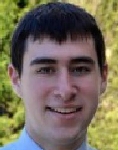 W’18, is a sophomore at Wharton and a contributor at The Daily Pennsylvanian, numberFire, and Fake Teams.
W’18, is a sophomore at Wharton and a contributor at The Daily Pennsylvanian, numberFire, and Fake Teams.
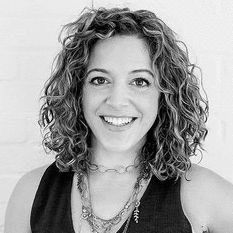 Exactly. And I also wasn’t thinking about what my needs and expectations were. One of the most important reasons why I wanted to start this business was to be able to spend more time with my kids and have that flexibility. So Felix and I talked about it, and we realized that it actually is important for me to have those few hours per day with the kids. I get scared thinking about looking back later in life and feeling as though I missed that chance to spend time with them. From there, we discussed how we were going to manage that need, and what it would look like for us. In a family business, it’s important to express when you’re unhappy about something in your personal space, but then you must also be able separate that out from what is happening workwise.
Exactly. And I also wasn’t thinking about what my needs and expectations were. One of the most important reasons why I wanted to start this business was to be able to spend more time with my kids and have that flexibility. So Felix and I talked about it, and we realized that it actually is important for me to have those few hours per day with the kids. I get scared thinking about looking back later in life and feeling as though I missed that chance to spend time with them. From there, we discussed how we were going to manage that need, and what it would look like for us. In a family business, it’s important to express when you’re unhappy about something in your personal space, but then you must also be able separate that out from what is happening workwise.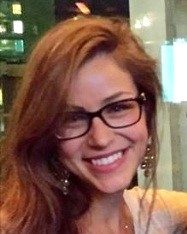 is an undergraduate senior in the Huntsman Program in International Studies and Business at Penn focusing on Management and Latin America.
is an undergraduate senior in the Huntsman Program in International Studies and Business at Penn focusing on Management and Latin America.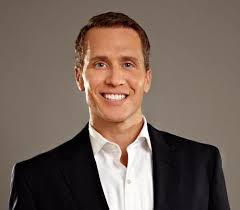 I got a phone call from friend in trouble. Zach Walker was a tough kid from a Northern California logging family. Went through B.U.D.S. (Basic Underwater Demolition SEAL training) together. He graduated and went to Afghanistan on a combat deployment. He came back and became an entrepreneur. He was a good father to his two young kids, then his life was just hammered by hardship: his brother died, he lost his business, and one day he pulled his truck into his driveway, got out and dropped to the ground because he thought there was a sniper watching him.
I got a phone call from friend in trouble. Zach Walker was a tough kid from a Northern California logging family. Went through B.U.D.S. (Basic Underwater Demolition SEAL training) together. He graduated and went to Afghanistan on a combat deployment. He came back and became an entrepreneur. He was a good father to his two young kids, then his life was just hammered by hardship: his brother died, he lost his business, and one day he pulled his truck into his driveway, got out and dropped to the ground because he thought there was a sniper watching him.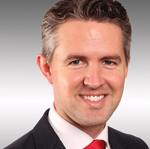 I was wounded in a helicopter crash near the Afghan-Pakistan border in 2004. I was a platoon leader for an army aviation unit. I was 25 years old, I had 25 soldiers and officers under my command, I was in charge of $25 million of equipment, and to top it all of, I was also in the 25th infantry division.
I was wounded in a helicopter crash near the Afghan-Pakistan border in 2004. I was a platoon leader for an army aviation unit. I was 25 years old, I had 25 soldiers and officers under my command, I was in charge of $25 million of equipment, and to top it all of, I was also in the 25th infantry division. is an undergraduate junior majoring in Operations and Information Management and in International Relations.
is an undergraduate junior majoring in Operations and Information Management and in International Relations.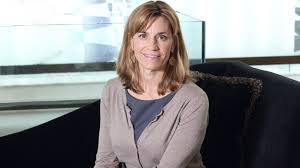 I have an undergraduate degree in political science and a master’s in fine arts from Duke University. After managing a theatre company and traveling all over the United States, I landed in Chicago and worked a number of other jobs including teaching in public schools and auditioning for theatre. At the time, Kohler Foundation, an arts- and education-related foundation, needed an Executive Director. I never thought I’d move back to Kohler, Wisconsin (where I was raised), but they needed someone with an arts- and education-related background, and I happened to fit the bill, so I interviewed for the role. The CEO of the company at the time happened to be my father, and he asked me why I wanted to return to Kohler! I was the queen of part-time jobs at the time—I was a waitress, an actress, and running around to schools. It was tiring pulling together a lot of different jobs to make ends meet. I was about to turn thirty, and I decided I wanted one paycheck. I knew that I was good at managing because of my touring company experience, so I decided to put my acting career on hold. I took the Executive Director job, and I did that for about two years. Next, I was the Director of Public Affairs, and then Vice President of Communications globally, which involved managing advertisements and PR for Kohler. Because of my work with people and teams, I was tapped to run HR when the head at the time exited. It seemed an odd choice at the time, but as I said, I did have a background working with people, especially in education. One of my former part time jobs was with Outward Bound. Long story short, that’s how I ended up in the people part of the business. Service is a big component of our work at Kohler. We drive engagement, attraction, and retention through stewardship and giving people the opportunity to give back.
I have an undergraduate degree in political science and a master’s in fine arts from Duke University. After managing a theatre company and traveling all over the United States, I landed in Chicago and worked a number of other jobs including teaching in public schools and auditioning for theatre. At the time, Kohler Foundation, an arts- and education-related foundation, needed an Executive Director. I never thought I’d move back to Kohler, Wisconsin (where I was raised), but they needed someone with an arts- and education-related background, and I happened to fit the bill, so I interviewed for the role. The CEO of the company at the time happened to be my father, and he asked me why I wanted to return to Kohler! I was the queen of part-time jobs at the time—I was a waitress, an actress, and running around to schools. It was tiring pulling together a lot of different jobs to make ends meet. I was about to turn thirty, and I decided I wanted one paycheck. I knew that I was good at managing because of my touring company experience, so I decided to put my acting career on hold. I took the Executive Director job, and I did that for about two years. Next, I was the Director of Public Affairs, and then Vice President of Communications globally, which involved managing advertisements and PR for Kohler. Because of my work with people and teams, I was tapped to run HR when the head at the time exited. It seemed an odd choice at the time, but as I said, I did have a background working with people, especially in education. One of my former part time jobs was with Outward Bound. Long story short, that’s how I ended up in the people part of the business. Service is a big component of our work at Kohler. We drive engagement, attraction, and retention through stewardship and giving people the opportunity to give back.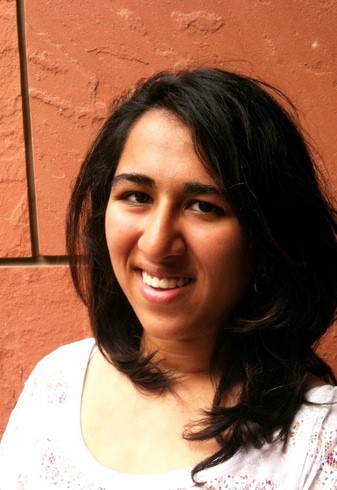 is a junior in the Wharton School studying Management and Marketing and OPIM with an International Relations minor. She also serves as a vice president for the Work-Life Integration Project Student Advisory Board.
is a junior in the Wharton School studying Management and Marketing and OPIM with an International Relations minor. She also serves as a vice president for the Work-Life Integration Project Student Advisory Board.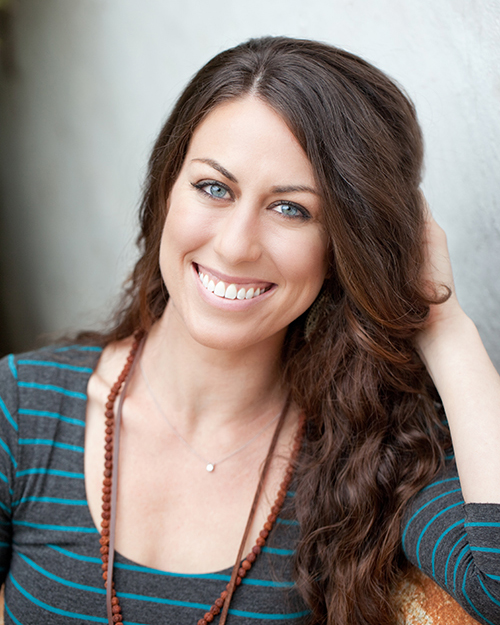 I love that sentiment because I think it’s really at the root of careers. Often career change is a question of how can I best be of service? Your question is one that I ask my clients a lot. For me, it’s how can I turn my challenges and struggles into something helpful for other people. That’s not to say that any of us would ever welcome really terrible times, but we recognize that they can be transformed and shared. We all get this level of compassion and depth from going through adversity that makes us stronger. I think sharing one’s own experience by telling your story is a great gift which has no monetary association at all, but it can be really key to helping each other through transitions or times of need. Sometimes I think life can be sort of like a seesaw: someone is up and someone is down. I think being able to help pull each other through confusing transitional times in our life is a huge gift.
I love that sentiment because I think it’s really at the root of careers. Often career change is a question of how can I best be of service? Your question is one that I ask my clients a lot. For me, it’s how can I turn my challenges and struggles into something helpful for other people. That’s not to say that any of us would ever welcome really terrible times, but we recognize that they can be transformed and shared. We all get this level of compassion and depth from going through adversity that makes us stronger. I think sharing one’s own experience by telling your story is a great gift which has no monetary association at all, but it can be really key to helping each other through transitions or times of need. Sometimes I think life can be sort of like a seesaw: someone is up and someone is down. I think being able to help pull each other through confusing transitional times in our life is a huge gift.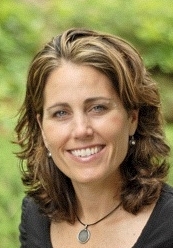 I think probably my parents helped. I was the fourth of four kids and maybe it was a consequence of being the fourth or maybe they were just hands-off, in a positive way, to the point of not coming to soccer game when I was little. I was not ever dependent on their praise. Everything I did I did it because I wanted to. I was innately competitive.
I think probably my parents helped. I was the fourth of four kids and maybe it was a consequence of being the fourth or maybe they were just hands-off, in a positive way, to the point of not coming to soccer game when I was little. I was not ever dependent on their praise. Everything I did I did it because I wanted to. I was innately competitive.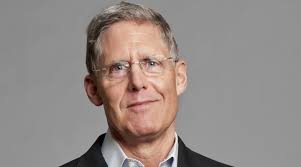 I heard recently that “days are long but life is short.” It’s important to step back and ask what matters. We are all different and have an opportunity to take advantage of our unique circumstance and gifts and apply those to achieve “success” as we define it. I try to step back and ask, “Have we achieved those things in life that matter most to us?” “What have you done with your gifts?” It’s not what’s in the bank or on paper.
I heard recently that “days are long but life is short.” It’s important to step back and ask what matters. We are all different and have an opportunity to take advantage of our unique circumstance and gifts and apply those to achieve “success” as we define it. I try to step back and ask, “Have we achieved those things in life that matter most to us?” “What have you done with your gifts?” It’s not what’s in the bank or on paper.